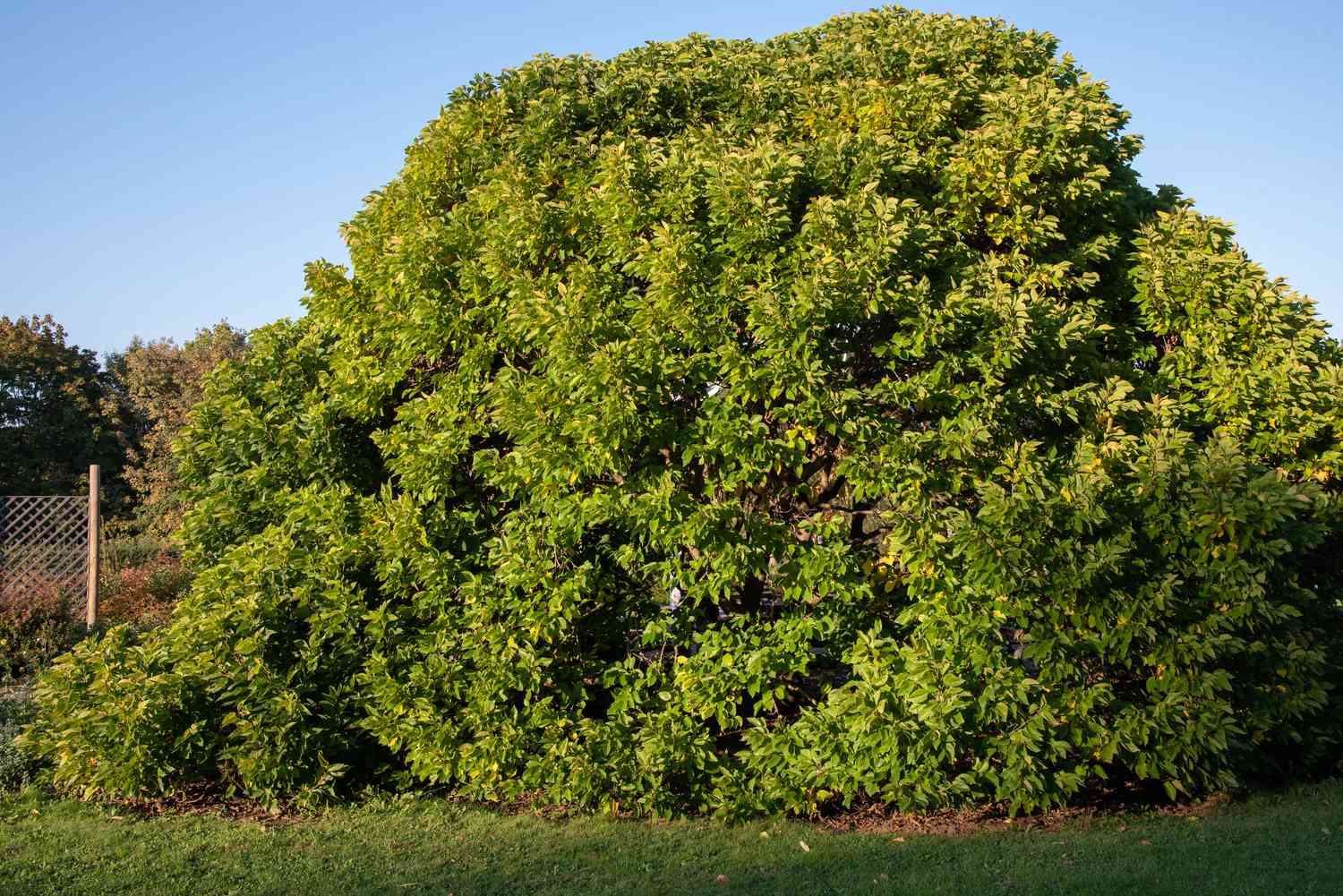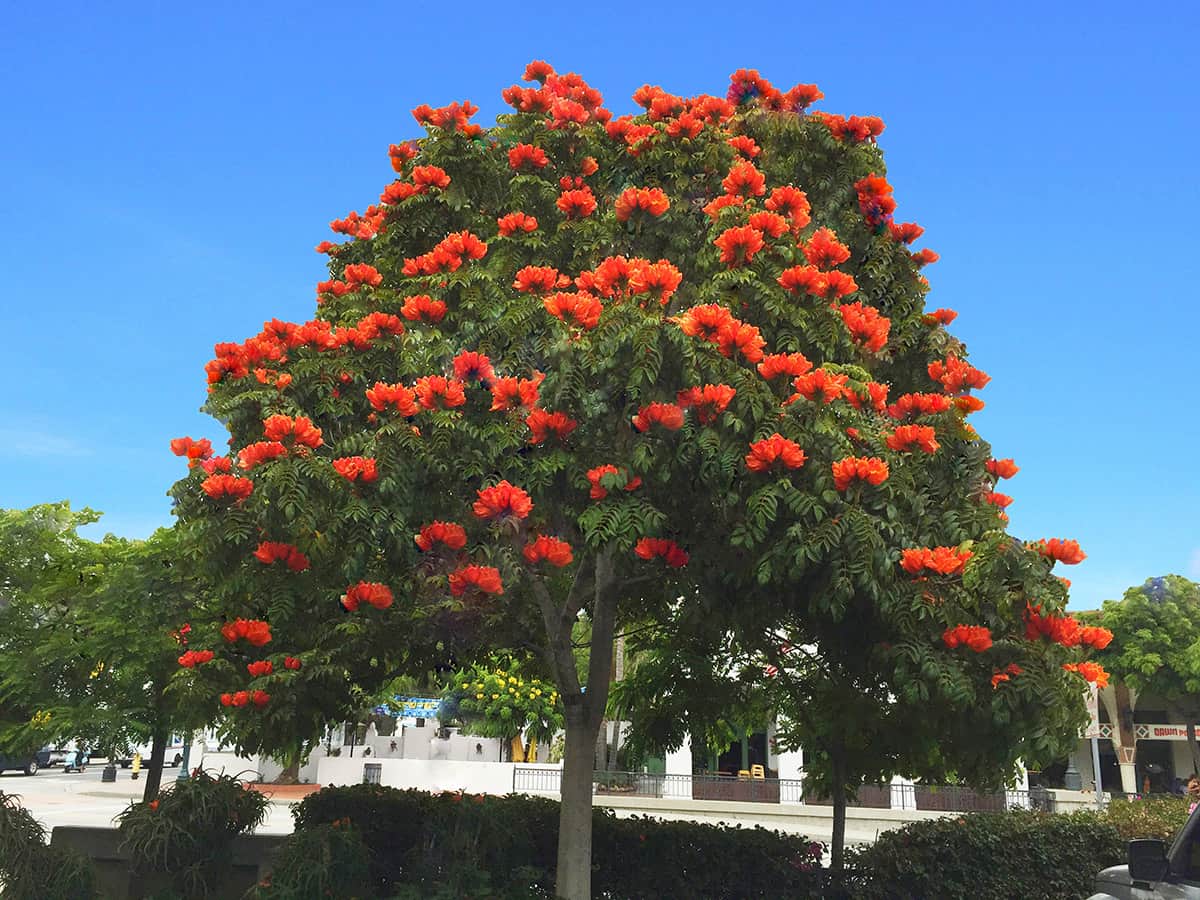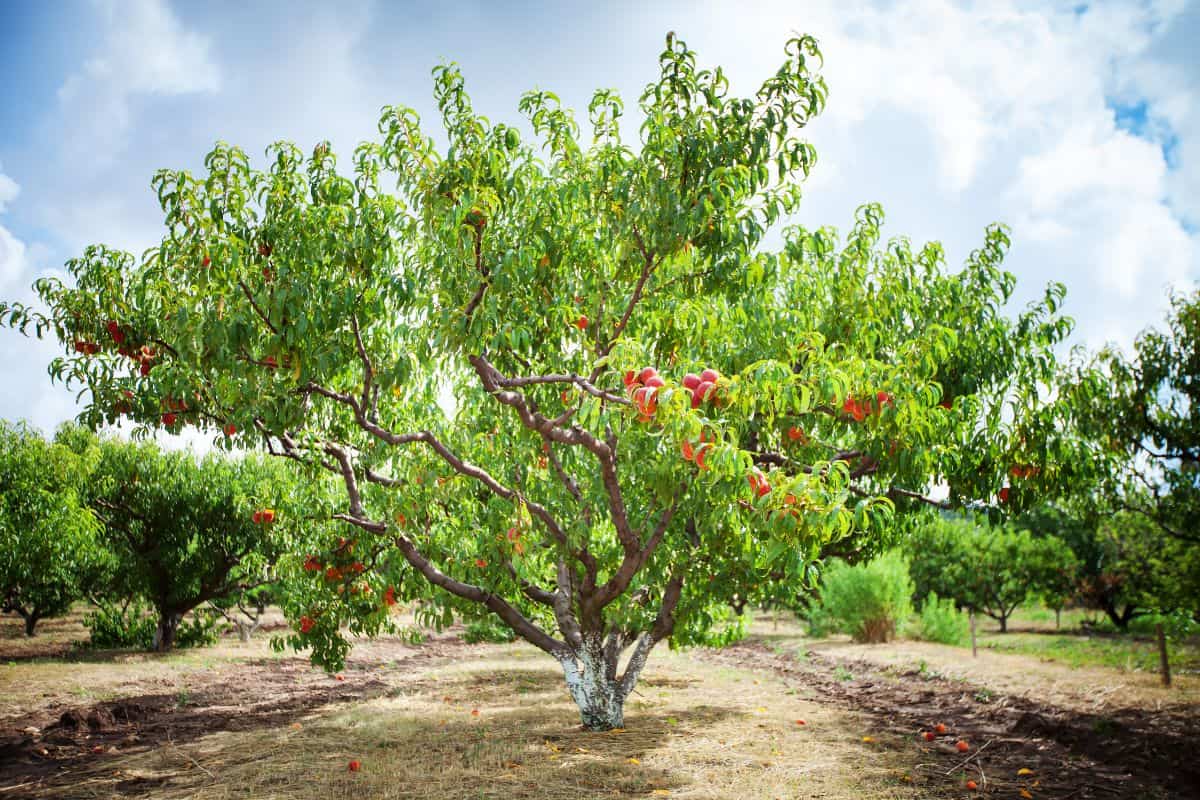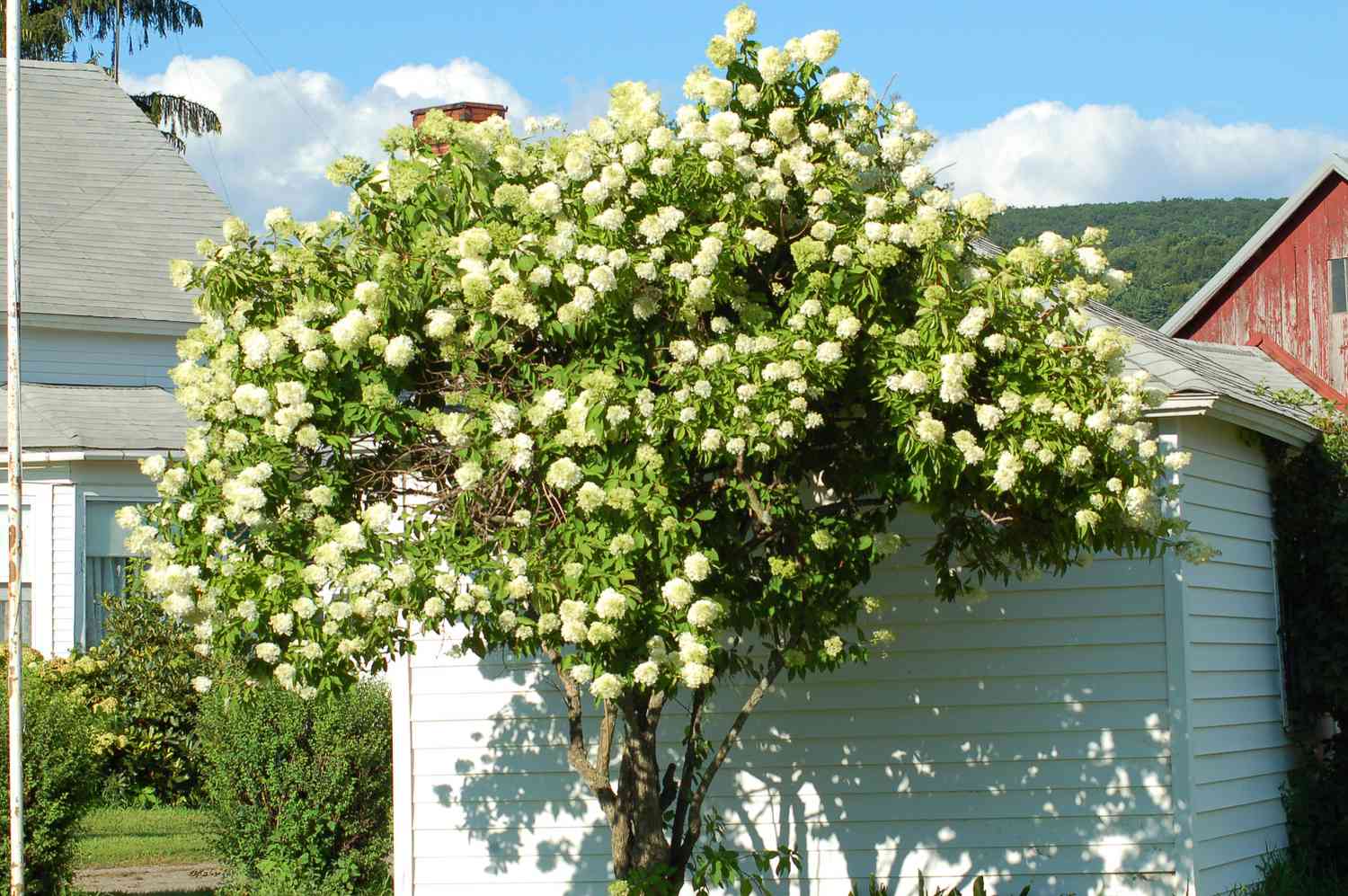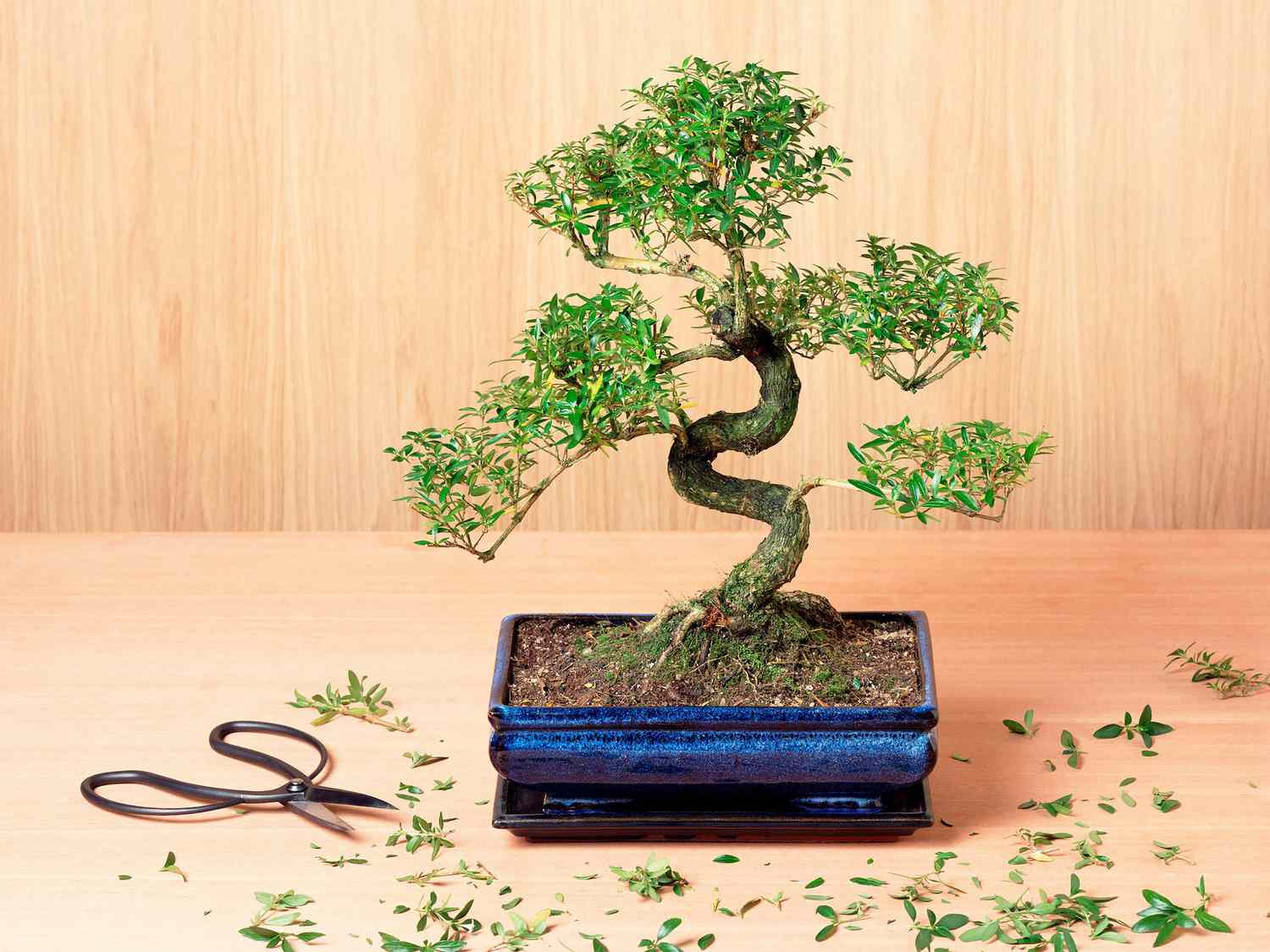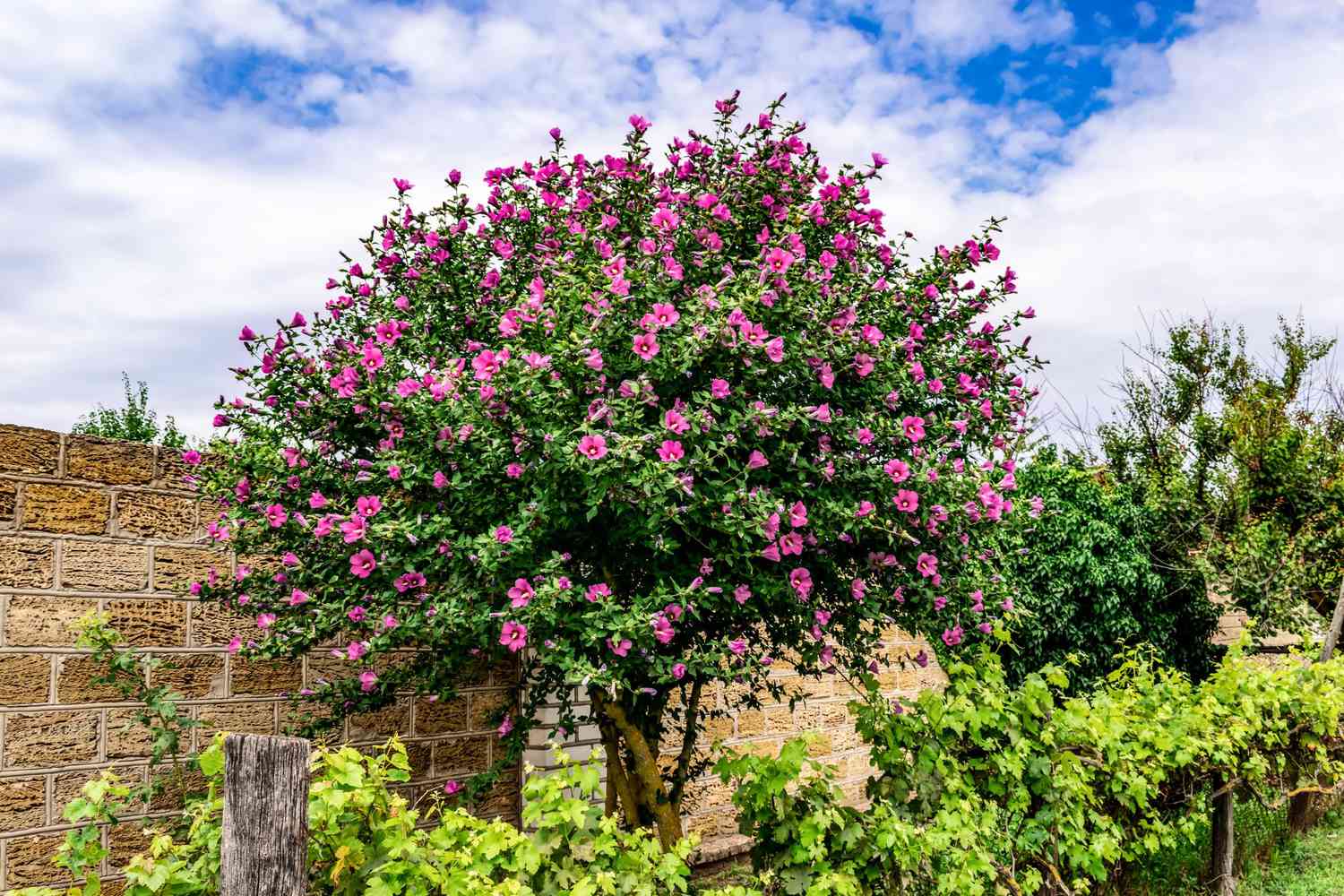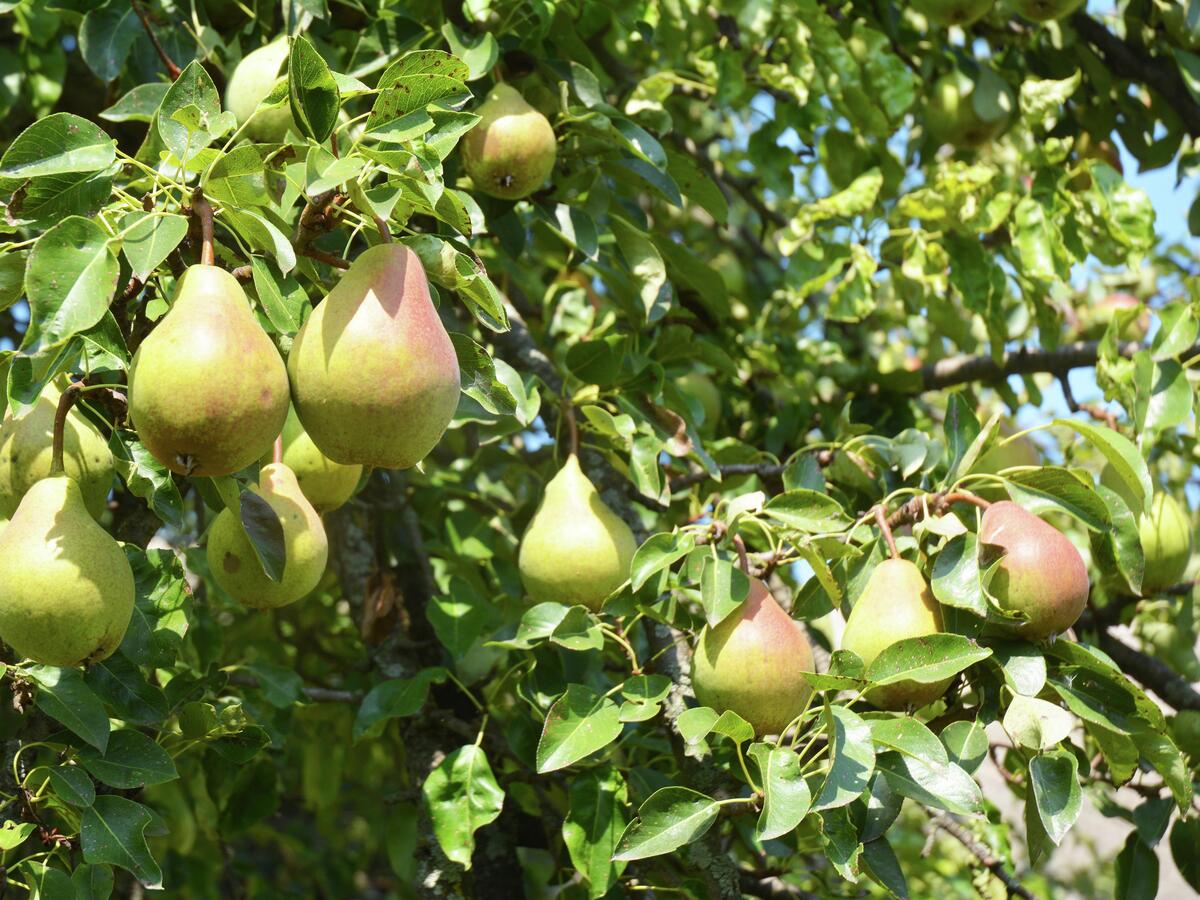Home>Types of Gardening>Ornamental Gardening>How Big Do Bonsai Trees Grow


Ornamental Gardening
How Big Do Bonsai Trees Grow
Modified: February 9, 2024
Discover the potential of bonsai trees in ornamental gardening. Learn how big they can grow, providing a beautiful addition to your garden.
(Many of the links in this article redirect to a specific reviewed product. Your purchase of these products through affiliate links helps to generate commission for Chicagolandgardening.com, at no extra cost. Learn more)
Table of Contents
- Introduction
- Understanding the Growth Potential of Bonsai Trees
- Factors Affecting the Size of Bonsai Trees
- Popular Bonsai Tree Varieties and Their Average Size
- Techniques for Controlling the Size of Bonsai Trees
- Tips for Maximizing the Growth of Bonsai Trees
- Common Mistakes to Avoid in Bonsai Tree Sizing
- Conclusion
Introduction
Welcome to the enchanting world of ornamental gardening! If you have a passion for gardening and appreciate the beauty of nature’s tiny wonders, then exploring the art of bonsai is an exciting journey to embark on. Bonsai, originating from ancient China and Japan, is the practice of cultivating miniature trees in small containers, using specific techniques to mimic the shape and proportions of full-sized trees.
Bonsai trees are not only visually stunning but also symbolize harmony, balance, and connection with nature. These tiny masterpieces bring a sense of tranquility and can be a therapeutic hobby for many gardening enthusiasts.
One of the key aspects of caring for bonsai trees is understanding how they grow and controlling their size. As a bonsai gardener, you have the power to shape and guide your trees’ growth, creating beautiful and unique living works of art.
In this article, we will delve into the factors that affect the size of bonsai trees, popular bonsai tree varieties and their average size, techniques for controlling the size of bonsai trees, tips for maximizing growth, and common mistakes to avoid. By the end, you will have a deeper understanding of how big bonsai trees can grow and the strategies to keep them thriving.
So, grab your pruning shears and let’s embark on this journey of discovering the growth potential of bonsai trees!
Understanding the Growth Potential of Bonsai Trees
Before we dive into the factors that affect the size of bonsai trees, it is crucial to understand the growth potential of these miniature wonders. Bonsai trees have the inherent ability to grow just like their full-sized counterparts, but with proper care and training, their growth is managed to create the desired aesthetic.
Bonsai trees are not genetically modified or stunted. They are ordinary trees that are carefully cultivated to maintain their small size through techniques such as pruning, wiring, and root trimming. These practices help to restrict the growth while enhancing the shape, proportion, and overall aesthetic appeal of the bonsai tree.
The size of a bonsai tree can vary depending on the species, as some naturally grow larger than others. For example, a pine tree bonsai will have a larger growth potential compared to a maple tree bonsai. However, it’s important to note that even within the same species, the size of a bonsai tree can vary greatly depending on the specific cultivar and the care it receives.
When growing a bonsai tree, it’s crucial to have realistic expectations regarding its size. While you can control and manipulate its growth to a certain extent, it’s not possible to create a bonsai tree that is smaller than its natural size potential. The goal is to create a miniature representation of a full-sized tree that maintains the essence and beauty of its larger counterpart.
Additionally, bonsai trees have a unique growth pattern. They grow in spurts, with periods of active growth and periods of rest. This growth cycle is influenced by various factors, including environmental conditions, seasonal changes, and the overall health of the tree. Understanding this growth pattern is essential to provide the appropriate care and maintenance required to keep your bonsai tree thriving.
Now that we have a fundamental understanding of the growth potential of bonsai trees, let’s explore the factors that can impact their size and how we can control it through careful cultivation and training techniques.
Factors Affecting the Size of Bonsai Trees
The size of a bonsai tree is influenced by several factors, both internal and external. Understanding these factors will help you effectively manage the size and growth of your bonsai tree. Here are some key elements that play a role in determining the size of your miniature masterpiece:
- Species: Different species of trees naturally have different growth habits and sizes. Some species, like the Japanese Maple or Juniper, are naturally more compact and suitable for creating smaller bonsai trees. On the other hand, species like the Pine or Oak have a larger growth potential, making them better suited for larger bonsai styles.
- Genetics: Just like humans, the genetics of a tree plays a crucial role in determining its size. Some tree varieties have naturally slow growth rates, while others grow quickly. When selecting a tree for bonsai cultivation, it’s important to choose one with favorable genetic traits that align with your desired bonsai size.
- Age: Age can also impact the size of a bonsai tree. Older trees tend to have thicker trunks and more developed branches, giving them a more mature and robust appearance. However, younger trees offer the advantage of being more flexible in terms of shaping and training.
- Nutrition and Watering: The nutrition and watering regimen you provide to your bonsai tree can affect its growth. Consistently providing the right balance of nutrients, while avoiding over-fertilization, will help maintain a controlled growth rate. Additionally, proper watering techniques, ensuring the tree is neither overwatered nor underwatered, will promote healthy growth.
- Pruning and Trimming: Pruning and trimming are essential techniques in bonsai cultivation. Removing excess branches and foliage helps to maintain the desired size, shape, and overall aesthetics of the tree. Regular pruning keeps the bonsai tree compact and prevents unchecked growth.
- Container Size: The size of the container in which the bonsai tree is planted plays a significant role in its growth. A smaller container restricts the root growth, which in turn helps control the overall size of the tree. However, it’s crucial to find the right balance, as an excessively small container can hinder the tree’s health and development.
- Training Techniques: Various training techniques, such as wiring and bending, can be utilized to shape the branches, trunk, and overall structure of the bonsai tree. Through careful manipulation, you can guide the growth and create the desired size and shape.
By understanding and managing these factors, you can effectively control the size of your bonsai tree and create a miniature masterpiece that captures the essence and beauty of nature. Now, let’s explore some popular bonsai tree varieties and their average sizes to further expand our understanding.
Popular Bonsai Tree Varieties and Their Average Size
Bonsai trees come in a wide variety of species, each with its own distinct characteristics, growth patterns, and size potential. Understanding the average size of popular bonsai tree varieties can help you choose the right species for your desired bonsai style. Here are some well-known bonsai tree varieties and their average sizes:
- Japanese Maple (Acer palmatum): Japanese Maple bonsai trees are prized for their vibrant foliage and delicate branching patterns. These trees typically range in height from 10 to 24 inches (25 to 60 cm), making them perfect for smaller bonsai styles.
- Juniper (Juniperus spp.): Juniper bonsai trees are known for their rugged, gnarled trunks and needle-like foliage. Their average size can vary depending on the species, but they generally range from 6 to 18 inches (15 to 45 cm) in height.
- Pine (Pinus spp.): Pine bonsai trees have an elegant and majestic appearance, with their distinctive, needle-like foliage. Depending on the specific pine species, they can grow from 10 to 40 inches (25 to 100 cm) in height, making them suitable for larger bonsai styles.
- Chinese Elm (Ulmus parvifolia): Chinese Elm bonsai trees are highly adaptable and have a graceful, spreading canopy. They typically range in height from 10 to 24 inches (25 to 60 cm) and are ideal for creating both formal and informal bonsai styles.
- Ficus (Ficus spp.): Ficus bonsai trees, also known as the Fig tree, have a distinctive aerial root system and glossy, dark green foliage. They have a compact growth habit and typically range from 6 to 18 inches (15 to 45 cm) in height.
- Trident Maple (Acer buergerianum): Trident Maple bonsai trees are revered for their attractive, three-lobed leaves and striking fall colors. They generally range in height from 10 to 24 inches (25 to 60 cm) and are well-suited for creating elegant, medium-sized bonsai styles.
- Bald Cypress (Taxodium distichum): Bald Cypress bonsai trees exhibit a unique, feathery foliage and an intriguing, buttressed trunk. They can grow from 10 to 36 inches (25 to 90 cm) in height and are often styled in a medium to large-sized bonsai style.
These are just a few examples of popular bonsai tree varieties and their average sizes. It’s important to note that these sizes are approximate and can vary depending on the specific cultivar, growing conditions, and the care provided to the tree.
Now that we have explored the popular bonsai tree varieties and their average sizes, let’s delve into the techniques for controlling the size of bonsai trees to create the desired artistic effects.
Techniques for Controlling the Size of Bonsai Trees
To create and maintain the desired size and proportion of a bonsai tree, several techniques can be employed. These techniques help control the growth and promote the development of a compact, miniature version of a full-sized tree. Here are some commonly used techniques for controlling the size of bonsai trees:
- Pruning: Regular and precise pruning is crucial to keep the bonsai tree’s size in check. By selectively removing unwanted branches, shoots, and foliage, you help maintain the desired shape and prevent excessive growth. Pruning also promotes back budding, which results in new shoots closer to the trunk, adding density and compactness.
- Pinching: Pinching involves removing the tips of new growth using your fingertips or pruning shears. This technique helps to control the length and direction of branches and encourages ramification, the development of smaller, more refined branches. Pinching also stimulates the growth of lateral buds, leading to a more compact tree.
- Wiring: Wiring is a technique used to shape and position branches and branches. By carefully wrapping wire around branches and bending them, you can create graceful curves, add movement, and control the direction of growth. The use of wire should be done with caution and should be regularly monitored to avoid wire scars.
- Root Pruning and Containment: Keeping the root system of a bonsai tree in check is vital for controlling its size. Periodic root pruning involves trimming and removing excess roots, which restricts the tree’s nutrient uptake and slows down its growth. Repotting the bonsai tree in a suitably sized container also helps to contain its size while providing ample space for the roots to grow.
- Defoliation: Defoliation is an advanced technique that involves removing all or a portion of the leaves from the tree. This technique is typically performed on deciduous trees during specific times of the year. Removing the leaves temporarily reduces the energy supply to the tree, which redirects resources towards growth in other areas, such as the branches and trunk, resulting in a more compact size.
- Prompting Dormancy: Some bonsai trees, such as deciduous species, require a period of dormancy during winter. By providing the tree with the right environmental conditions, including temperature and light exposure, you can control its growth and ensure a healthy cycle of dormancy and active growth.
It’s important to note that these techniques should be executed with care and in alignment with the specific needs of the bonsai tree species. Careful observation and consideration of the tree’s growth patterns and response to these techniques will guide you in controlling its size effectively.
Now that we have explored the techniques for controlling the size of bonsai trees, let’s move on to tips for maximizing their growth so that they can thrive in their miniature form.
Tips for Maximizing the Growth of Bonsai Trees
While controlling the size of bonsai trees is essential, it’s equally important to ensure they receive the necessary care and conditions to thrive and grow vigorously. Maximizing the growth of your bonsai tree will result in a healthier and more vibrant miniature masterpiece. Here are some tips to help you foster optimal growth:
- Provide Adequate Light: Bonsai trees require sufficient light to carry out photosynthesis and promote healthy growth. Place your bonsai tree in a location where it can receive the appropriate amount of sunlight for its specific species. If natural light is insufficient, consider using artificial grow lights to supplement the light requirements.
- Water Properly: Proper watering is crucial for the growth and survival of bonsai trees. Ensure that the soil is consistently moist but not waterlogged. Water your bonsai tree thoroughly, allowing excess water to drain away, and avoid letting the tree sit in standing water. Adjust your watering frequency based on environmental conditions and the needs of the specific tree species.
- Apply Balanced Fertilizer: Bonsai trees require regular feeding to ensure they receive the necessary nutrients for growth. Use a balanced, slow-release fertilizer specifically formulated for bonsai trees. Apply the fertilizer according to the manufacturer’s instructions and adjust the frequency and strength based on the tree’s growth and development.
- Monitor Soil Moisture and Drainage: Bonsai trees thrive in well-draining soil that allows oxygen to reach the roots. Regularly check the moisture level of the soil to avoid overwatering or underwatering. Adjust the soil composition and consistency based on the needs of the particular tree species to promote healthy root growth and overall growth.
- Protect from Extreme Conditions: Bonsai trees are sensitive to extreme weather conditions. Protect them from frost, excessive heat, strong winds, and sudden temperature fluctuations. When extreme conditions are expected, consider moving your bonsai tree indoors or providing it with appropriate shelter.
- Regularly Inspect for Pests and Diseases: Keep a close eye on your bonsai tree for any signs of pests or diseases. Regularly inspect the leaves, branches, and soil surface for any abnormalities. If you notice any issues, take immediate action to address and control the problem, using appropriate pest control methods or seeking guidance from a professional if needed.
- Practice Patience and Observation: Bonsai trees are a long-term project that requires patience and observation. Monitor your bonsai tree’s growth, response to techniques, and overall health regularly. Adjust your care routines accordingly and make necessary adjustments to ensure the tree’s continued growth and development.
By implementing these tips, you can create an optimal environment for your bonsai tree’s growth, helping it reach its full potential in its miniature form.
Now, let’s explore some common mistakes to avoid when it comes to sizing bonsai trees, to ensure that you can navigate the challenges of bonsai gardening successfully.
Common Mistakes to Avoid in Bonsai Tree Sizing
When it comes to sizing bonsai trees, there are a few common mistakes that beginners and even experienced bonsai enthusiasts should avoid. These mistakes can hinder the growth and development of the bonsai tree or create an unnatural appearance. Here are some key mistakes to be mindful of:
- Overpruning: One of the biggest mistakes is overpruning the bonsai tree. While pruning is necessary for shaping and controlling growth, excessive pruning can stress the tree, weaken its vitality, and stunt its growth. Always maintain a balance between removing excess growth and allowing the tree to thrive.
- Improper Pruning Techniques: It’s important to learn and practice proper pruning techniques. Incorrect pruning cuts or removing branches too close to the trunk can lead to unsightly wounds and potential disease or insect infestation. Invest time in learning the correct techniques or seek guidance from experienced bonsai gardeners.
- Using Incorrect Tools: Using improper tools for pruning and shaping bonsai trees can cause damage to the branches and leaves. Invest in high-quality bonsai tools and keep them clean and sharp. This will ensure clean cuts and minimize any stress or trauma to the tree during shaping and maintenance.
- Ignoring Proper Watering: Watering mistakes can have a detrimental effect on the growth of bonsai trees. Overwatering can cause root rot, while underwatering can lead to dehydration and stunted growth. Learn about the specific watering needs of your bonsai tree species and adjust your watering routine accordingly.
- Using Poor-Quality Soil: The quality and composition of the soil are essential for healthy growth. Using poor-quality or inappropriate soil can lead to root suffocation, poor drainage, and nutrient deficiencies. Invest in well-draining, nutrient-rich bonsai soil that suits the specific needs of your tree species.
- Ignoring Environmental Factors: Bonsai trees are sensitive to their environment. Ignoring crucial environmental factors such as light, temperature, and humidity can impact a bonsai tree’s growth and health. Ensure your tree receives adequate light, protect it from extreme temperatures, and create a suitable microclimate for optimal growth.
- Skipping Regular Maintenance: Bonsai trees require regular care and maintenance to thrive. Skipping essential tasks such as pruning, wiring, repotting, and fertilizing can hinder growth and lead to a less attractive appearance. Stay consistent with the necessary maintenance routines to encourage healthy growth.
By avoiding these common mistakes and implementing the correct techniques and practices, you can ensure that your bonsai tree maintains its desired size and achieves its full potential as a miniature work of art.
Now, let’s wrap up our discussion on bonsai tree sizing and summarize the key points we’ve covered.
Conclusion
Bonsai gardening is a captivating and rewarding hobby that allows you to create miniature works of art in the form of living trees. Understanding the growth potential, factors that affect size, and techniques for controlling the size of bonsai trees is essential for their successful cultivation.
We learned that bonsai trees have the inherent ability to grow just like their full-sized counterparts but are carefully managed through pruning, training, and other techniques to maintain a compact and aesthetically pleasing size. Factors such as species, genetics, age, and the care provided play a significant role in determining the size of bonsai trees.
By implementing techniques such as pruning, pinching, wiring, and root pruning, bonsai enthusiasts can maintain the desired shape and size of their trees. Providing adequate light, proper watering, and balanced nutrition are essential for maximizing the growth and health of bonsai trees.
It’s important to avoid common mistakes in bonsai tree sizing, such as overpruning, improper techniques, using incorrect tools, ignoring proper watering and soil, and neglecting environmental factors. By avoiding these mistakes and staying consistent with proper care and maintenance, you can ensure the continued growth and development of your bonsai trees.
Remember, bonsai gardening requires patience, observation, and an understanding of the unique needs of each tree species. With dedication and a deep appreciation for the art form, you can create stunning miniature trees that bring joy and tranquility to your life.
So, let your creativity flourish, nurture your bonsai trees with care, and enjoy the beauty and serenity they bring to your ornamental garden.
